Aspen RxHealth Resources
Get the latest news, perspectives, and content on medication therapy management, patient education, medication adherence and more from the only gig-economy platform built by clinical pharmacists, for remote pharmacists.

3 Patient Education Strategies to Encourage Medication Adherence
February 16, 2023 | 1 minute read
Pharmacists who prioritize proper patient education, encouragement, and engagement can make great improvements toward medication adherence.

Aspen RxHealth Announces Professional Coaching Program for Pharmacists
February 6, 2024 | 1 minute read
First-of-its-kind professional coaching program brings vibrant opportunities for pharmacists interested in entrepreneurship and professional development.
Tags: Press Releases

CMS Health Equity Index: What every health plan needs to know now
July 17, 2023 | 1 minute read
It's time for Medicare Advantage health plans to understand how the new CMS Health Equity Index will impact future performance and reimbursement models.

Aspen RxHealth Added to the Best Places to Work in Healthcare List
October 4, 2022 | Less than 1 minute read
Aspen RxHealth has been named by Modern Healthcare as one of the 2022 Best Places to Work in Healthcare.
Tags: Press Releases

Supporting Pharmacists in Delivering Improved Patient Outcomes
December 1, 2018 | 1 minute read
Company raises $9 million Series A to build its world class team and accelerate the implementation of intervention technology to improve patient outcomes.
Tags: Press Releases

How Clinical Pharmacists Drive Star Ratings and Pharmacy Performance
February 20, 2023 | 4 minute read
With the introduction of the Star Ratings system in 2008, healthcare’s business model changed. Here's what clinical pharmacists can do to drive ratings.
Tags: Pharmacist, Quality Improvement

3 Benefits of Outsourced Clinical Pharmacy Services
August 11, 2023 | 1 minute read
What is the value of outsourced clinical pharmacy services? Here are three important benefits to keep in mind when comparing pharmacy programs.

AI: Healthcare's Next Frontier
February 29, 2024 | 2 minute read
Aspen RxHealth co-founder and president, David Medvedeff, offers his take on the future of pharmacy, as a pharmacist and tech entrepreneur.

12 New Ways Companies Are Helping to Improve Medication Adherence
July 19, 2023 | Less than 1 minute read
Medication adherence remains an important focus of treatment, but there are new ways that we can improve adherence rates among patients.
Tags: In the News

Aspen RxHealth: $23M Raised by Bessemer Venture Partners
January 7, 2021 | 1 minute read
Aspen RxHealth announces the closure of a $23 million Series B funding with Bessemer Venture Partners to further innovations in healthcare technology.
Tags: Press Releases

Aspen RxHealth Named one of the Best Places to Work in Healthcare
May 18, 2021 | 1 minute read
Modern Healthcare has recognized Aspen RxHealth as one of the best places to work in healthcare in 2021. Read the press release here.
Tags: Press Releases

Meet Aspen RxHealth – A Revolution In Pharmacist-led clinical care
April 22, 2021 | 1 minute read
Aspen RxHealth's Chief Commercial Officer, Clayton Walberg, discusses the impact of pharmacist-led clinical care on improved patient health outcomes.
Tags: In the News

Personalization and the Future of Digital Health Technology
June 14, 2021 | 1 minute read
Innovations in digital health technology are making a difference in quality of care, according to experts in a recent panel discussion.
Tags: Patient Outcomes, In the News

The Health Tech Startup Overhauling Pharmacy As We Know It
June 27, 2023 | 1 minute read
It's time to change the way pharmacists provide care for patients. Aspen RxHealth is using health tech and mobile applications to lead the way.
Tags: In the News

Access to Clinical Pharmacists Can Improve Medication Adherence
February 9, 2023 | 2 minute read
To improve medication adherence among patients, healthcare providers will need to turn to pharmacists for support and clinical consultations.
Latest Posts

3 Ways MTM Improves Patient Outcomes
May 7, 2024
MTM eligibility volume is only going to increase moving forward. So, how can health plans use this service to improve their population's outcomes? Let's find out.

How MTM Programs Help Improve Pharmacist Patient Relationships
April 12, 2024
Medication therapy management (MTM) programs are a great way to build strong pharmacist patient relationships to create future health benefits.

How Medication Therapy Management Impacts Chronic Disease Management
March 27, 2024
Medication therapy management is a key tool in the fight to manage chronic disease. Learn how pharmacists can make an impact.

How Medication Therapy Management Empowers Health Plan Members
March 19, 2024
Learn why medication therapy management is one of the most impactful ways to deliver patient education and empower health plan members.

Celebrating International Women's Day with Aspen RxHealth
March 8, 2024
Celebrate International Women's Day by hearing from some of the inspiring women leaders from Aspen RxHealth.
Tags: Thought Leadership

The Pharmacy Industry: Past, Present, and Future
March 7, 2024
The pharmacy industry is rapidly evolving. Hear from Aspen RxHealth about the state of the field and trends in digital health and care delivery.
Tags: Pharmacy Industry

AI: Healthcare's Next Frontier
February 29, 2024
Aspen RxHealth co-founder and president, David Medvedeff, offers his take on the future of pharmacy, as a pharmacist and tech entrepreneur.

How to Solve Professional Challenges for Clinical Pharmacists
February 13, 2024
In recent years, clinical pharmacists have seen new challenges that must be overcome in order to improve performance and patient outcomes.
Tags: Pharmacist Career, How-to

Aspen RxHealth Announces Professional Coaching Program for Pharmacists
February 6, 2024
First-of-its-kind professional coaching program brings vibrant opportunities for pharmacists interested in entrepreneurship and professional development.
Tags: Press Releases
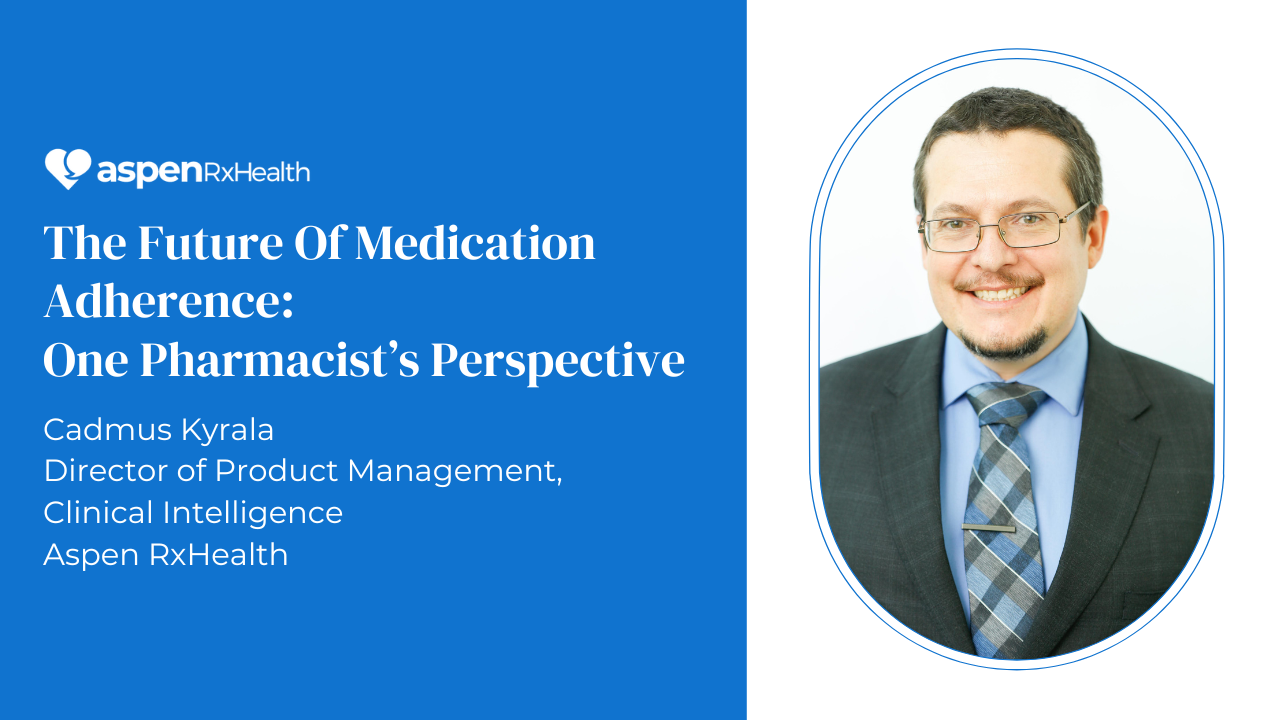
The Future Of Medication Adherence: One Pharmacist’s Perspective
January 25, 2024
Get a pharmacy industry expert's perspectives on how technology will impact the future of medication adherence.

A Top 5 Guide: Essential Benefits of Having an MTM Partner
January 25, 2024
Struggling to communicate the benefits of an MTM partner to leadership? We're here to help you make a case for the tools you need.

The Future of Medication Therapy Management
January 25, 2024
How is medication therapy management (MTM) and how will it impact chronic disease management in the future? Let's find out.

Practicing at the Top of Your Pharmacist License
January 17, 2024
Looking for ways to be at your best as a pharmacist? Check out these tips from the nation's largest community of pharmacists!
Tags: Pharmacist, Pharmacist Career

MTM Strategies for Chronic Condition Management
January 17, 2024
Learn how pharmacist-led MTM programs can supercharge your health plan's chronic condition management strategy.

Year-End Tax Planning for Consulting Pharmacists
January 15, 2024
What should consulting pharmacists consider when tax planning? Check out these factors that may influence how you approach 2023 taxes.

Navigating Health Insurance Benefits as a Consulting Pharmacist
December 29, 2023
Wondering about health insurance options available to consulting pharmacists? Learn from Aspen RxHealth about your options.

The Student Loan Payment Pause Is Over. Now What?
December 13, 2023
Learn how to prepare yourself to pay off your student loans from Aspen RxHealth Professional Coach and financial expert Derek Delaney.

Remote Pharmacists Make Clinical Pharmacy Care More Accessible
December 4, 2023
What many don't realize is that pharmacists can play a key role in increasing clinical care accessibility. Discover how remote pharmacists can do this.
Tags: Pharmacist, Patient Care
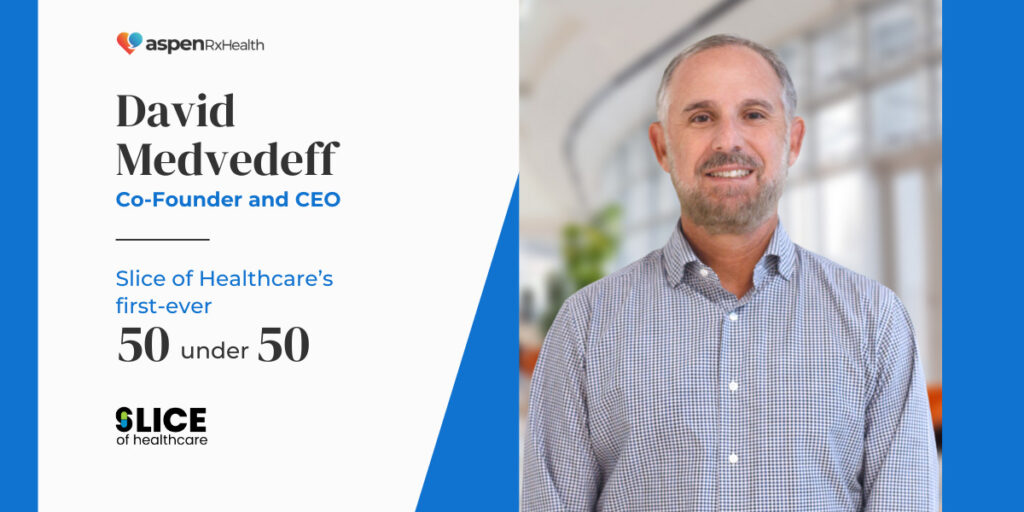
Aspen RxHealth Co-Founder and CEO on 50 Under 50 In Healthcare List
October 3, 2023
Aspen RxHealth's Co-Founder and CEO, David Medvedeff, PharmD, MBA was named to Slice of Healthcare's first-ever 50 Under 50 list for innovative leadership.
Tags: Press Releases

Retail and Clinical Pharmacists: Creating Better Patient Outcomes
September 28, 2023
Discover opportunities, as a clinical pharmacist, to use your training and knowledge to impact patients’ lives and result in positive patient outcomes.
Tags: Pharmacist, Patient Care

Medication Adherence Strategies to Improve Patient Outcomes
September 20, 2023
How can you improve patient outcomes? Here are 3 medication adherence strategies to consider in your treatment programs.

SVP of Marketing and Communications on PRWeek’s 2023 40 Under 40 List
August 22, 2023
Healthcare technology startup’s marketing and communications leader recognized for exceptional contributions in public relations.
Tags: Press Releases

3 Benefits of Outsourced Clinical Pharmacy Services
August 11, 2023
What is the value of outsourced clinical pharmacy services? Here are three important benefits to keep in mind when comparing pharmacy programs.

12 New Ways Companies Are Helping to Improve Medication Adherence
July 19, 2023
Medication adherence remains an important focus of treatment, but there are new ways that we can improve adherence rates among patients.
Tags: In the News

CMS Health Equity Index: What every health plan needs to know now
July 17, 2023
It's time for Medicare Advantage health plans to understand how the new CMS Health Equity Index will impact future performance and reimbursement models.

Why You Should Consider Remote Pharmacist Jobs
July 11, 2023
Although many healthcare professionals find themselves unable to care for patients virtually, new technologies are making remote pharmacist jobs feasible.

The Health Tech Startup Overhauling Pharmacy As We Know It
June 27, 2023
It's time to change the way pharmacists provide care for patients. Aspen RxHealth is using health tech and mobile applications to lead the way.
Tags: In the News

The Role of Remote Clinical Pharmacists in Patient Education
June 12, 2023
As healthcare’s top-tier medication experts, pharmacists are uniquely positioned to lead the charge on patient education.

How to Solve the Top 8 Medication Adherence Barriers
June 8, 2023
Medication nonadherence can quickly lead to a decline in patient health. But, understanding medication adherence challenges can improve patient outcomes.

Aspen RxHealth Honored in 2023 American Business Awards®
May 23, 2023
Aspen RxHealth was recognized at the 2023 American Business Awards® for an innovative service delivery model aimed at empowering in-house pharmacy teams.
Tags: Press Releases

How One Company Is Tackling Medication Adherence
May 11, 2023
Mail-order pharmacies are gaining popularity. But how can these pharmacies tackle the challenges of medication adherence?
Tags: In the News

Aspen RxHealth Achieves HITRUST Certification
May 9, 2023
Aspen RxHealth granted HITRUST certification for commitment to the protection of protected health information (PHI) and data security.
Tags: Press Releases

Positive Outcomes in Chronic Conditions Rely on Patient Education
May 1, 2023
The key to improving patient education and unlocking cost savings related to chronic conditions can likely be found in our overburdened healthcare system.

How Medication Adherence Can Improve Patient Satisfaction
April 27, 2023
Delivering a positive consumer experience in business is crucial for improving patient satisfaction—and healthcare is now no different.

4 Benefits of a Remote Pharmacist
March 7, 2023
Pharmacists nationwide are finding themselves able to work remotely, thanks to the internet. Here are the benefits of a remote pharmacist on your team.

Analyzing the Costs of Outsourcing Clinical Pharmacy Services
March 7, 2023
Star Ratings can impact profitability of healthcare services. By outsourcing clinical pharmacy services, your team can reduce costs and improve outcomes.

Celebrate Women's History Month 2023 with Leaders from Aspen RxHealth
March 1, 2023
Join Aspen RxHealth for Women's History Month 2023 as our team discusses leadership, challenges, and overcoming barriers in healthcare.
Tags: Thought Leadership

How Clinical Pharmacists Drive Star Ratings and Pharmacy Performance
February 20, 2023
With the introduction of the Star Ratings system in 2008, healthcare’s business model changed. Here's what clinical pharmacists can do to drive ratings.
Tags: Pharmacist, Quality Improvement

3 Patient Education Strategies to Encourage Medication Adherence
February 16, 2023
Pharmacists who prioritize proper patient education, encouragement, and engagement can make great improvements toward medication adherence.

Access to Clinical Pharmacists Can Improve Medication Adherence
February 9, 2023
To improve medication adherence among patients, healthcare providers will need to turn to pharmacists for support and clinical consultations.

5 Questions to Ask a Clinical Pharmacist Before Taking Statins
February 2, 2023
When discussing medications like statins with your healthcare provider, there are a few key questions to ask a pharmacist that can help them help you.
Tags: In the News

Patient-Centric Relationships: The Crucial Role Clinical Pharmacists Play
January 31, 2023
In the eyes of many patients, their pharmacist’s sole intention is to fill a prescription. It's time to redefine the pharmacist patient relationship.
Tags: Pharmacist, Patient Care

Finding The Right Pharmacy Partner for Clinical Services
January 13, 2023
It might be easier than you think to find a pharmacy partner that provides clinical services and drives positive patient outcomes.

The Impact of Medication Nonadherence on Healthcare Costs
January 6, 2023
Medication nonadherence leads to wasted resources and spending. Luckily, improving medication adherence is beneficial for both pharmacists and patients.

3 Ways to Run an Efficient MTM Program
December 8, 2022
Incorporating MTM programs involves consultative services aimed at optimizing the effects of medications for patients. But, it’s easier said than done.

The Undeniable Truth: How Patient Demographics Impact Nonadherence
December 1, 2022
What's the connection between patient demographics and medication nonadherence? Here are a few strategies to consider for improved patient outcomes.

The Importance of a Clinical Pharmacist in MTM Programs
November 22, 2022
MTM programs are designed to improve patient outcomes and reduce the risks of medication. However, this can't be achieved without clinical pharmacists.

David Medvedeff: How Health Tech Can Impact Wellness
November 17, 2022
Big tech gets a bad rep. But many health tech advancements make monumental positive changes to society, health, and the environment.
Tags: In the News

2023 Star Ratings: What Changed and Where to Go From Here
November 10, 2022
The new 2023 Medicare Advantage (MA) Star Ratings are on the minds of many Medicare plan providers. Here's what you need to know.

Improving the Patient-Pharmacist Relationship in 4 Easy Steps
November 4, 2022
How can you improve the patient-pharmacist relationship? Discover four easy steps you can follow for improved trust and medication adherence.
Tags: In the News

Medication Adherence and Chronic Condition Management
October 31, 2022
Effective chronic condition management can be influenced by medication adherence. But, sometimes, patients need additional help from clinical pharmacists.

Pharmacy Industry Trends: What to Watch For
October 27, 2022
From biosimilars to artificial intelligence, these are the pharmaceutical industry trends poised to take community pharmacy by storm.
Tags: In the News

How Clinical Pharmacists Can Boost Medication Adherence Rates
October 25, 2022
By focusing on pharmacist-led care and patient education, health plans may see an improvement in medication adherence, and improved overall health.
Tags: Pharmacist, Medication Adherence
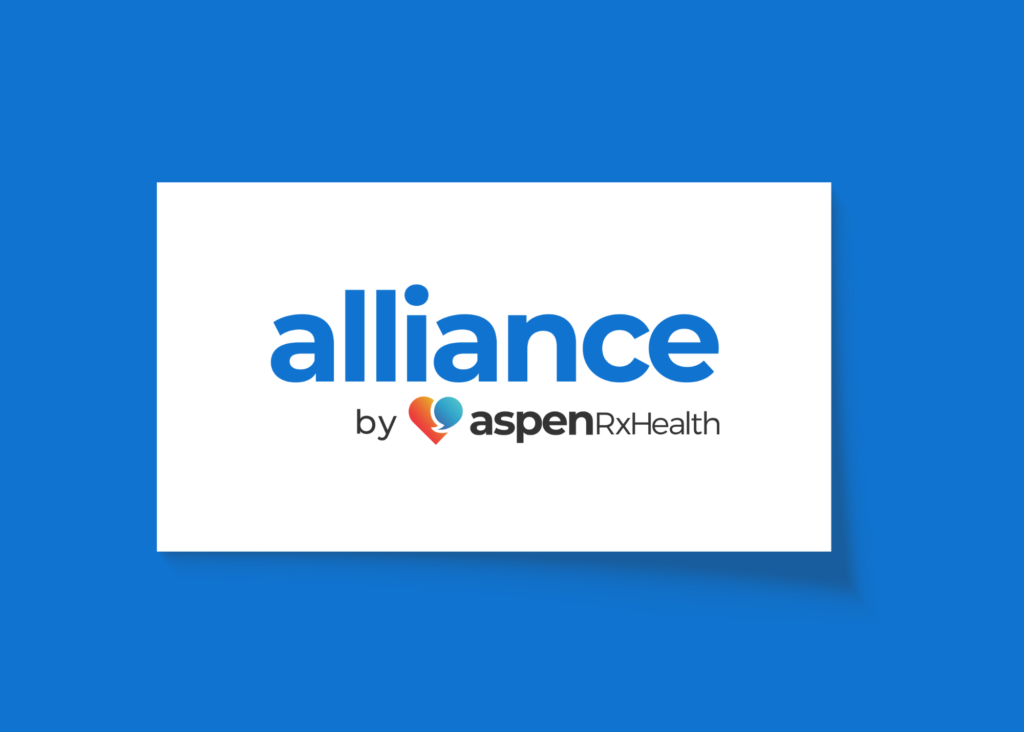
New Launch: Clinical Pharmacy Services Platform for Payers
October 25, 2022
Our new clinical pharmacy services platform reduces operational risk to in-house teams while opening access to a gig economy of over 7,000 pharmacists.
Tags: Press Releases

Pharmacy and Healthcare Labor Shortage Crisis Needs Meaningful Change
October 18, 2022
In recent years, we've seen a spike in pharmacies in crisis. The healthcare labor shortage is hurting pharmacies everywhere, and something needs to change.
Tags: In the News
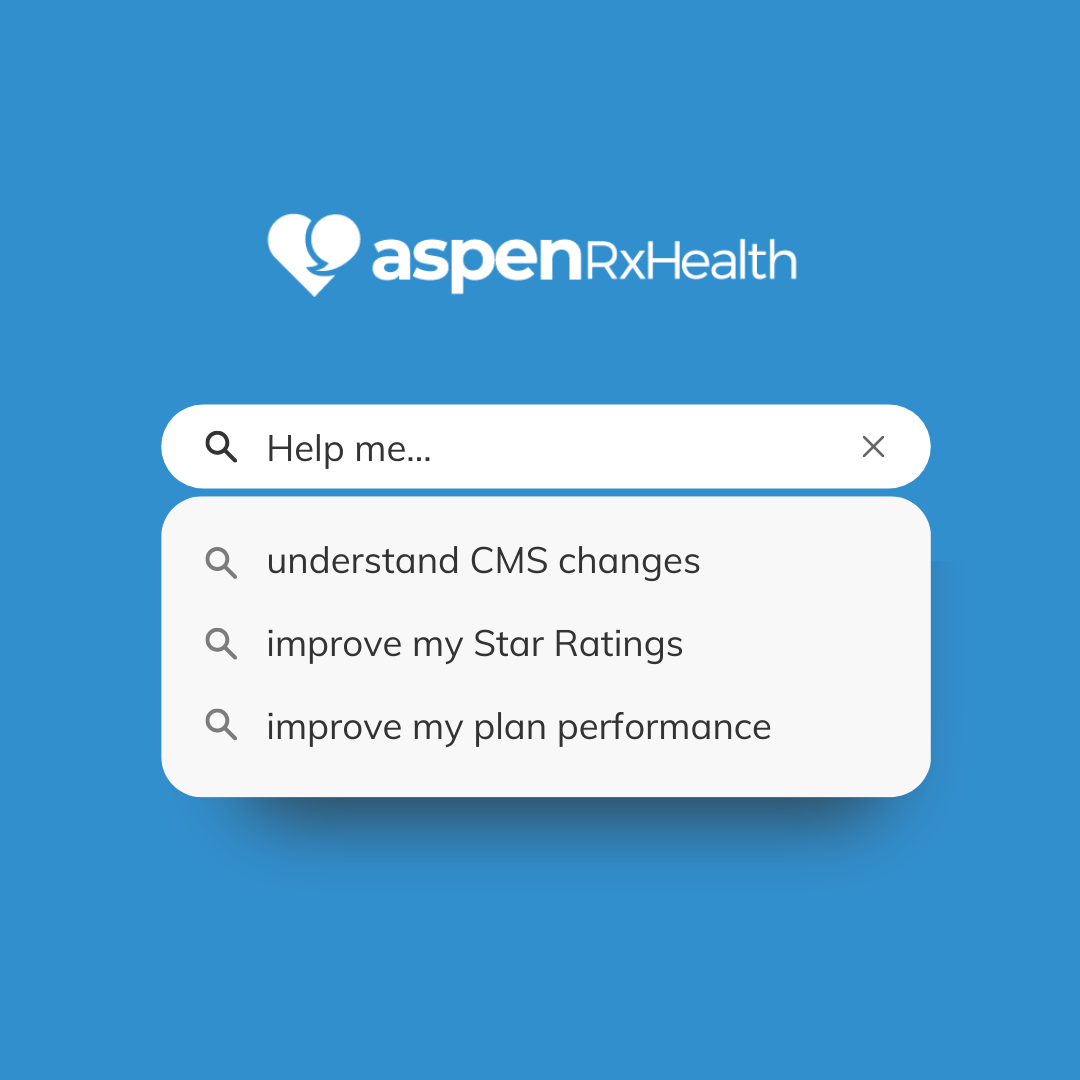
Medicare Advantage Star Ratings Expected to Decline
October 13, 2022
Medicare Advantage star ratings are expected to decline in 2022. Here's what healthcare providers and health plan members need to know.
Tags: In the News
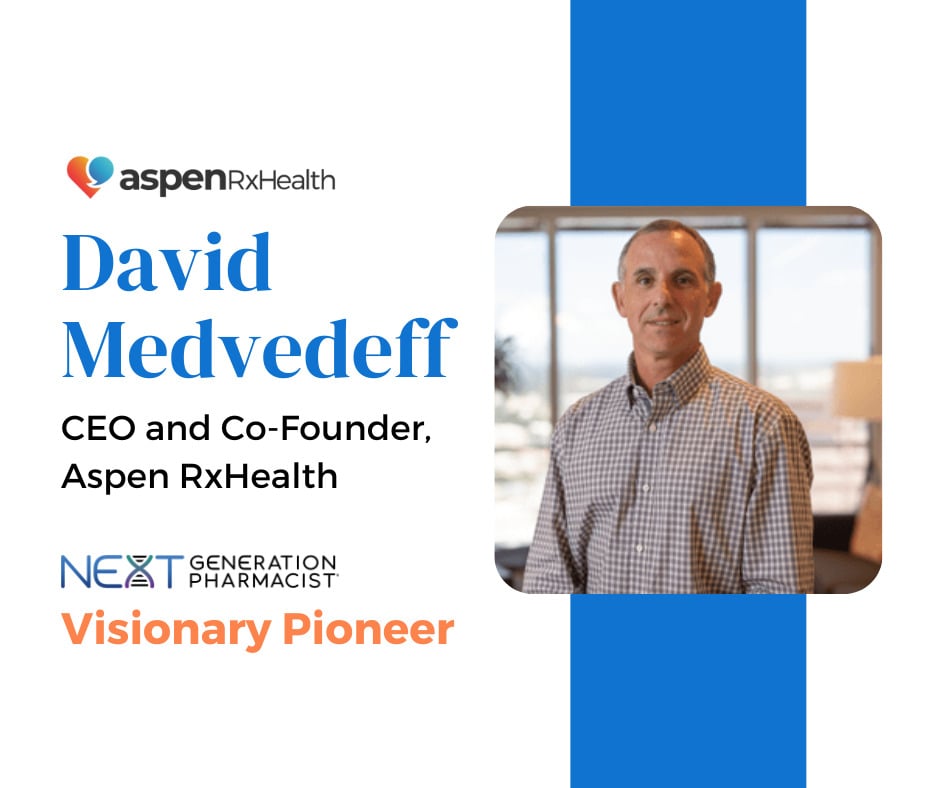
Aspen RxHealth CEO Receives Next Generation Pharmacist Award
October 6, 2022
David Medvedeff, Aspen RxHealth co-founder and chief executive officer, has been honored as a Visionary Pioneer in the Next-Generation Pharmacist Awards.
Tags: Press Releases

Aspen RxHealth Added to the Best Places to Work in Healthcare List
October 4, 2022
Aspen RxHealth has been named by Modern Healthcare as one of the 2022 Best Places to Work in Healthcare.
Tags: Press Releases

Improving Medication Management for Patients
September 20, 2022
As chronic conditions become more prevalent, medication regimens are also growing in complexity. Improved medication management can resolve these issues.
Tags: In the News

The Future of Pharmacy: Clinical Practices with a Remote Pharmacist
August 18, 2022
Have you heard of healthcare worker burnout? Aspen RxHealth Consultant Laura Cranston discusses the impact of a remote pharmacist on performance.

31 Pharmacy Pros Named 2022 Next-Gen Pharmacist® Awards Finalists
August 16, 2022
Pharmacy Times® and Parata Systems jointly announced the 31 pharmacy professionals named finalists of the 2022 Next-Generation Pharmacist® awards.
Tags: Press Releases

Aspen RxHealth: Becoming a Pharmapreneur Webinar
July 25, 2022
Join the Aspen RxHealth webinar six-part bi-weekly series on becoming a pharmapreneur to learn more about entrepreneurship in the pharmaceutical industry.
Tags: Press Releases

How Pharmacist-led Care Improves Specialty Medication Management
July 6, 2022
It's common to have patients in specialty medication management programs, but these programs can be enhanced with pharmacist-led care.

Jennifer Cohen Named One of the Top Women in Communications
June 28, 2022
Jennifer Cohen, Senior Vice President of Marketing and Communications, is named among the Top Women in Communications of 2022.
Tags: Press Releases

What Does a Pharmacist Do? 5 Things You Might Not Know
June 2, 2022
What does a pharmacist do? If you've wondered, learn about some of the things your pharmacist can do that you might not have known.
Tags: Pharmacist

Jennifer Cohen: Top 25 Women Leaders in Healthcare Software
May 24, 2022
Jennifer Cohen, Senior Vice President of Marketing and Communications, has been ranked among the Top 25 Women Leaders in Healthcare Software of 2022.
Tags: Press Releases

Improve Patient Engagement in Healthcare with Outsourced MTM Programs
May 20, 2022
Internal management of MTM programs are often costly and time consuming. Outsourced programs might be the solution for patient engagement in healthcare.

David Medvedeff Named a Top 50 Healthcare Technology CEO
May 12, 2022
Aspen RxHealth co-founder and CEO, David Medvedeff, has been named one of the Top 50 Healthcare Technology CEOs of 2022 by The Healthcare Technology Report
Tags: Press Releases

Pharmacist Burnout: A Case for a Transformative Approach to Care
April 17, 2022
Are pharmacists burning out? Discover some of pressures contributing to pharmacist burnout and a potential solution.
Tags: In the News

Innovative Technology Helps Chronic Condition Management
September 29, 2021
As technology continues to make breakthroughs across industries, pharmacists can use digital tools to improve chronic condition management.
Tags: In the News

Personalization and the Future of Digital Health Technology
June 14, 2021
Innovations in digital health technology are making a difference in quality of care, according to experts in a recent panel discussion.
Tags: Patient Outcomes, In the News

Aspen RxHealth Named one of the Best Places to Work in Healthcare
May 18, 2021
Modern Healthcare has recognized Aspen RxHealth as one of the best places to work in healthcare in 2021. Read the press release here.
Tags: Press Releases

Aspen RxHealth Named one of the Best Places to Work in Healthcare
May 18, 2021
Modern Healthcare has recognized Aspen RxHealth as one of the best places to work in healthcare in 2021.
Tags: Press Releases

Meet Aspen RxHealth – A Revolution In Pharmacist-led clinical care
April 22, 2021
Aspen RxHealth's Chief Commercial Officer, Clayton Walberg, discusses the impact of pharmacist-led clinical care on improved patient health outcomes.
Tags: In the News

The Healthcare Gig Economy: How We Can Prevent Pharmacy Whiplash
March 10, 2021
History tends to repeat itself, so reevaluating the way we provide services with a healthcare gig economy could greatly reduce pharmacy whiplash.

Off Label Indications: Provocative Thoughts from a Lifetime Pharmacist
January 12, 2021
Join Aspen RxHealth CEO David Medvedeff to uncover his perspectives around emerging healthcare industry trends.

Aspen RxHealth: $23M Raised by Bessemer Venture Partners
January 7, 2021
Aspen RxHealth announces the closure of a $23 million Series B funding with Bessemer Venture Partners to further innovations in healthcare technology.
Tags: Press Releases

Aspen RxHealth Expands Services Nationally in Support of 2021 Demand
September 22, 2020
Aspen RxHeath's next-generation clinical pharmacy technology enriches the patient-pharmacist experience to drive better patient outcomes.
Tags: Press Releases

Aspen RxHealth Adds Targeted Medication Review and Health Plan Star Rating Services to its Clinical Documentation Tool for Pharmacists
October 8, 2019
Aspen RxHealth announced today a new major release of its intelligent app that connects pharmacists with patients to support optimal medication use.
Tags: Press Releases

Humana Collaborates with Aspen RxHealth on New Healthcare App
June 25, 2019
Aspen RxHealth announces that Humana, Inc. has chosen to connect pharmacists with patients through the company's innovative healthcare app.
Tags: Press Releases

Supporting Pharmacists in Delivering Improved Patient Outcomes
December 1, 2018
Company raises $9 million Series A to build its world class team and accelerate the implementation of intervention technology to improve patient outcomes.
Tags: Press Releases
Meet Aspen RxHealth
Nice to meet you, we're Aspen RxHealth. We were founded by pharmacists looking to change the course of the profession by introducing greater flexibility, direct patient care, and opportunities to fully utilize your skills and education.